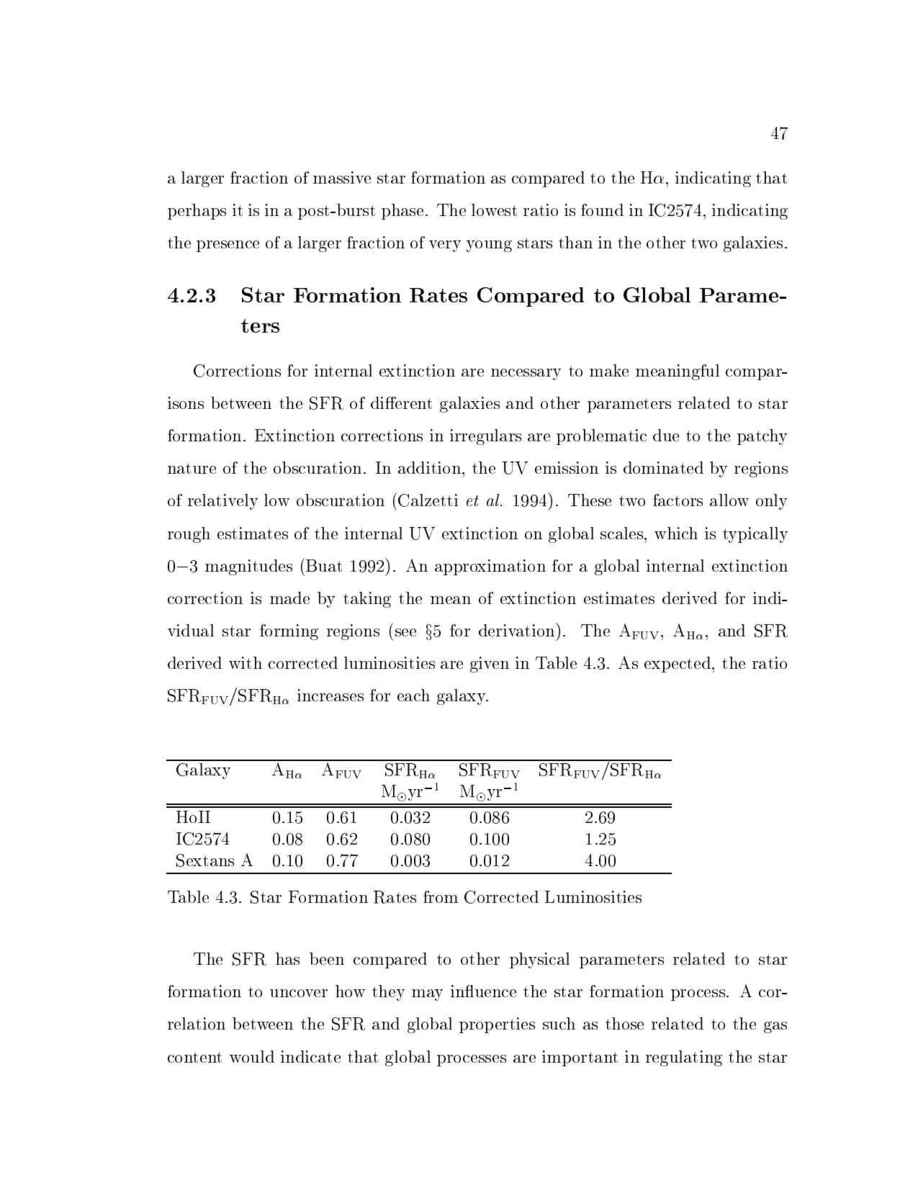
47
a larger fraction of massive star formation as compared to the H , indicating that
perhaps it is in a post-burst phase. The lowest ratio is found in IC2574, indicating
the presence of a larger fraction of very young stars than in the other two galaxies.
4.2.3 Star Formation Rates Compared to Global Parame-
ters
Corrections for internal extinction are necessary to make meaningful compar-
isons between the SFR of di erent galaxies and other parameters related to star
formation. Extinction corrections in irregulars are problematic due to the patchy
nature of the obscuration. In addition, the UV emission is dominated by regions
of relatively low obscuration Calzetti
et
al.
1994. These two factors allow only
rough estimates of the internal UV extinction on global scales, which is typically
0
,
3 magnitudes Buat 1992. An approximation for a global internal extinction
correction is made by taking the mean of extinction estimates derived for indi-
vidual star forming regions see
x
5 for derivation. The A
FUV
, A
H
, and SFR
derived with corrected luminosities are given in Table 4.3. As expected, the ratio
SFR
FUV
SFR
H
increases for each galaxy.
Galaxy
A
H
A
FUV
SFR
H
SFR
FUV
SFR
FUV
SFR
H
M yr
,1
M yr
,1
HoII
0.15 0.61
0.032
0.086
2.69
IC2574
0.08 0.62
0.080
0.100
1.25
Sextans A 0.10 0.77
0.003
0.012
4.00
Table 4.3. Star Formation Rates from Corrected Luminosities
The SFR has been compared to other physical parameters related to star
formation to uncover how they may in uence the star formation process. A cor-
relation between the SFR and global properties such as those related to the gas
content would indicate that global processes are important in regulating the star
